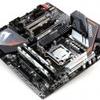Introduction
Gigabyte Aorus H370 Gaming 3 (WIFI) motherboard
Gigabyte €139 / USD H370 value offering for Coffee Lake
Gigabyte releases its budget-friendly Aorus H370 Gaming 3 motherboard, we'll pair it with a six-core Core i7 8700K processor. Yes, this is the Coffee Lake platform being more affordable.
So what if you want to reap the benefits of the Coffee Lake platform, but do not need all the exquisite tweaking options and features the more expensive Z370 motherboards offer? Well, pair the H370 with the new Core i5 8600 (non-K), and you'll have the ability to create a beast of a gaming rig. With an H370 chipset you get most of the features and functionality from that Z370 platform, yet scrap the tweaking and overclocking functions. This effectively means that K model processors are not something you should spend your money on as you cannot OC them easily anyway. Any H370 chipset based motherboard, however, offers plenty of features for both internal and external connectivity. For example, you will spot things like an HDMI port, USB 3.1 ports, six SATA3 ports, and even two M.2 slots. There is Gigabit Ethernet and proper 8-channel HD audio. There's also space for a 1x Mini-PCIe Half-Size slot for a WLAN card (WIFI optional though). Very interesting is the inclusion of a 1x M.2 2280 slot that supports PCIe 3.0 x4 (the second one is limited to 2x). But sure, one M.2 SSD can be fitted with a full speed NVMe enabled M.2 SSD.
The intricate looking Gigabyte Aorus H370 Gaming 3, which we'll pair with a Core i7 8700K, is a motherboard positioned in the affordable mainstream segment of the Gigabyte line-up. It offers decent looks (especially when powered on with some LED bling), offers features like higher-grade onboard audio, 2x M.2 SSD support (one with heatsink), GigE Ethernet interfaces (Intel), and two reinforced PCIe x16 slots. On the next few pages, I will take you guys a little deeper into the architecture and processor series that is Coffee Lake as well as the H370 chipset, followed by a hefty benchmark session to see how well this motherboard performs and what it has to offer.


